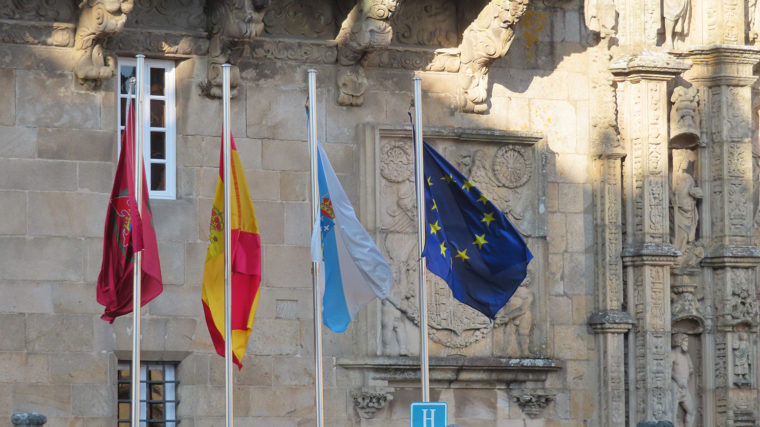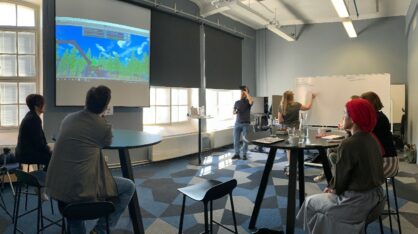There are many perspectives on EU projects and about their coordination. Yet, having successfully coordinated a number of international and also award-winning EU projects, including the first and the latest one, with high scores, and having taken part in other projects for almost twenty years, I have accumulated a certain understanding and started to see patterns of what works and does not work, which I share herewith. In fact, someone once said that these are some of the best projects from which to learn. Many of these elements, including the need for soft skills in work life, go beyond EU project work and apply to work life in general.
About the terminology of this article: a project coordinator in EU terms is a project manager who takes care of the whole project at the EU level and is the contact point between the Commission and the partnership.
To start with
First of all, when it comes to a project coordinator, I would replace the image of a tough looking old, male manager with the idea of a Project Mother, someone who takes care of everything and everyone no matter what, and, well, there are many more elements to justify the term Project Mother.
Secondly, a project coordinator should have a general project-work mentality and skills. This includes understanding deadlines, handling stress and uncertainty, the ability to work together with others, taking risks and losing face, in addition to balancing between rules (of the financer) and absolute flexibility and creative problem solving. Coordinating an international EU project is not for someone faint-hearted and who likes certainty.
Thirdly, project work is not always fun and the project coordinator, especially, has to deal with plenty of uncomfortable things. It is not a 9 to 5 job (or 8 to 4 in Finland). A lot of flexibility is needed when there is something to finish or take care of. On a positive note, you often become friends with people you work with and you may experience interesting things. You might be on the road a lot, so it does also influence your hobbies, and family issues require arrangement. In addition, the human dimension makes the work even more challenging, including various cultural aspects, different working styles and national practices, to mention a few. So yes, it may not be everyone’s cup of tea.
Fourthly, a full 360 degrees handbook for project coordination does not exist, although financers provide handbooks and instructions, and project coordination is taught at school, too. Project coordination is practical, organic, untamed, and it is learning by doing. One’s personal background influences everything one does, and this is no exception. For instance, my own international background (going back generations) has certainly helped a lot. I can be in my own element, and, paradoxically, those long meetings and travelling only give me energy. Also, my background in the fashion business has helped me to tolerate and manage uncertainly, stretch myself when needed, not to cry over spilled milk, and bounce back from negative situations, among other things.
And lastly, people who work in international projects often have certain things in common, for instance, an ability to tolerate insecurity and uncertainly, a strong will to push through whilst being collaborative, emotional, with a human dimension, and flexible – absolutely not rigid. These characteristics also contribute to becoming a good project coordinator.
12 tips for running an EU project
Here are some tips and insights that can help in running a project. These are of course subjective experiences, from myself and other international project coordinators’ experiences, but I hope they are helpful.
- The project idea and a functional team to deliver the project
- A good project idea and a project plan, and a team capable of delivering the project and sustaining it at required standards and levels, and within an agreed timeline, is the starting point. Although most of these aspects are already evaluated during the application selection phase, after the approval, anything may happen during the project and the successful delivery of the project is in the hands of the project coordinator and the project team.
- The team should not only have skills on paper, but put things into practice; implementing them, is essential. The team should also be able to balance between creative problem solving and rationality and rules. One essential element in starting and continuing project work, is forgetting about egos and positions. In these projects, you are only as good as your ability to work together with others and deliver what has been agreed upon.
- And of course, make sure at the beginning and throughout the project, that everyone knows what they are working with, what the project is about, and who does what, why and when.
- Project administration
- This is everyone’s favourite topic – to avoid and forget about, but as the project coordinator, you simply need to make it happen and monitor that everything is as it should be, ask for corrections if needed, etc., as you are the main responsible party at the project level and will report everyone’s expenses and work.
- Of course the funder has their own rules and you can always ask them, but you need to organise the administrative and monitoring side of the project in an easily ‘digestible’ way and create common tools for different purposes in a way that the funder, evaluators and auditors can read and understand what has been produced.
- And lastly, follow the rules and gather all the documents during the project (as advised by funders). It just makes life a lot easier and saves time during, immediately after and years after the project when the project can still be audited.
- Collaboration with the funder
- As mentioned in the previous point, the funder provides information, instructions and materials to you for the benefit of the project. Use that, listen to them, respect what you have been provided with, and ask in advance about any issues that are puzzling you or the partners. The funder is your support to make things happen, not your enemy or an annoying parent.
- Attitudes and background
- The better the attitudes are, the better they enable the delivery of a project. Being humble is one of the best attitudes, as well as respecting others, keeping a common schedule, etc. You can contribute to the attitudes of others with your own behaviour.
- Harness your own and your partners’ backgrounds for the benefit of the project and take everyone’s background into consideration.
- Working methods
- Agree on the working methods and keep things organised and simple. Categorising things not only helps the international team to work together, but also shows the evaluators and auditors that everything that was promised has been delivered so that the project will not suffer from misunderstandings at the evaluation phase. For instance, naming similar files with the same initial file type indicator and different ending for differentiation helps the work. Although it may seem to be more work, the return of that time investment is significant. This also applies to monitoring the project and its achievements.
- There are no stupid questions – ask, do not wait
- Ask, and ask partners to ask, if there are any questions or doubts. There are no stupid questions. There is always a good reason for everything.
- Balance between rules and practice
- Rules are for people; people are not for the rules. Rules are tools. In these projects there are rules to follow exactly, for example, those of financial and exposure elements. Fortunately they are usually simple to follow, but as life is life, there might be a need to see how somethings go and talk about any adjustments well in advance with the financer.
- Deliver the work as promised and at the level of quality required whilst being target group oriented
- Delivering the work as promised and at the required level of quality whilst being target group oriented is again one of the basics. If the outcomes are not usable and target group oriented, the project is a failure. No matter how fancy some may write, if it does not serve the purpose, it is bad work quality. Hence, outcomes need to be tested the during the development phase to foresee and manage risks. High quality, target group-oriented outcomes will be sustainable and this will increase the return of investments in the project. It is the same thing as wanting to have a usable car when buying one. In order to let people know about the product, you need to market and inform them about it.
- Learning at 360 degrees
- The best way to learn about project coordination and how to do it is to immerse oneself 360 degrees in all areas of the project. This means learning about different aspects of a project, which is necessary to successfully coordinate a project as it shows how different elements click together and how elements and issues influence each other. For instance, it is difficult to make decisions without understanding the whole. In this context, 360 degrees covers all project aspects from content and team to administration.
- Also remember that you will never be ready. Every day is a new day and a chance for new learning. You can learn from any challenging situations and failures (these are some of the best ones), good examples, from other partners’ and coordinators’ experiences, target groups… you name it, even from your own life. Yet one should also take into account that showing willingness and an active approach towards one’s own learning, even if this would require investing some time, is important too. Maybe this indeed is one of the tests of if one has what it takes to become a project coordinator.
- A coordinator is a 360 degrees person taking care of everything
- The coordinator takes care of everything. For example, if there is an issue with a work package or delivery, the coordinator will find a solution or someone to address it, even if that means doing it oneself. The coordinator is the one who pushes the project through, no matter what. This requires the ability to handle many things at the same time and jump, in a split second, from creative work to administrative work and vice versa. So yes, have some chocolate and green tea available as you might need it.
- People dimension
- We are all humans and the human dimension with all of the different cultures and working styles etc. is the most challenging one. Fortunately, people working in these projects are usually rather collaborative. Of course the working styles and cultures can pose a risk; it is not fun to redo interviews or parts of them because someone, after the materials had already been delivered and many interviews conducted, without notifying anyone, all of a sudden, changes essential elements for the interviews. And these things do happen.
- In addition, anything may happen with the team: pregnancies, sickness, changing employment, etc. And new people need to be introduced and updated to the project.
- Then there is ice-breaking, forming the team, any emotional and physiological states of being, etc. as after all, we are all humans. Projects can be very demanding and hectic, and hence, the human dimension is essential to help the team to deliver the work.
- And lastly, show that you are a human being too and listen to everyone.
- Self-care
- Taking care of yourself is important. It can be anything, seeing the irony, going to the forest, enjoying the beauty of the clouds on the plane… that best suits you.
So it is not easy, but it can be rewarding. Perhaps, if life gives you lemons, you might have what it takes to become an international project coordinator.


